15+ Sample Annual Narrative Report
-
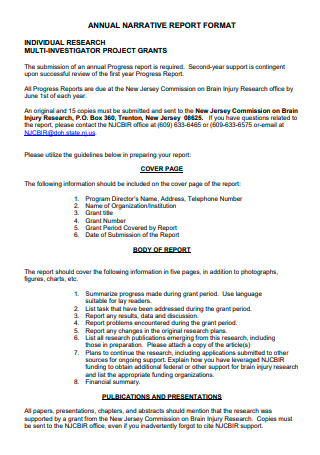
Annual Narrative Report Format
download now -
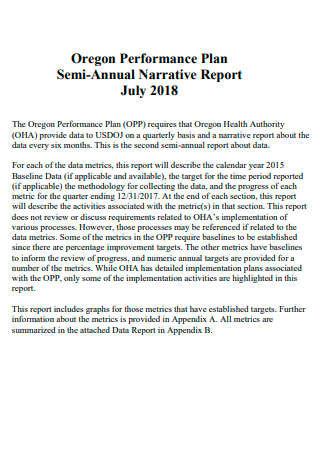
Semi-Annual Narrative Report
download now -
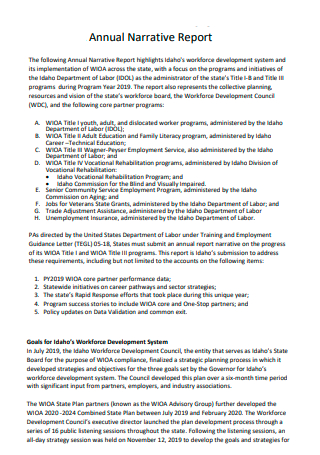
Annual Narrative Report in PDF
download now -
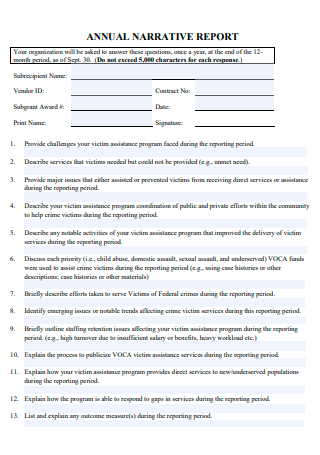
Basic Annual Narrative Report
download now -
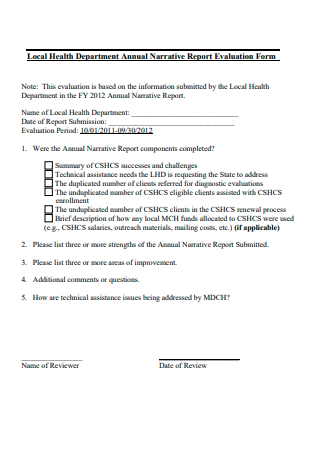
Local Health Department Annual Narrative Report Evaluation Form
download now -
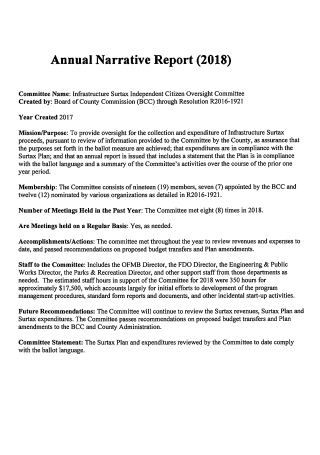
Standard Annual Narrative Report
download now -
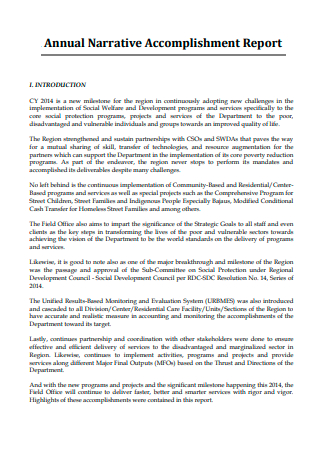
Annual Narrative Accomplishment Report Template
download now -
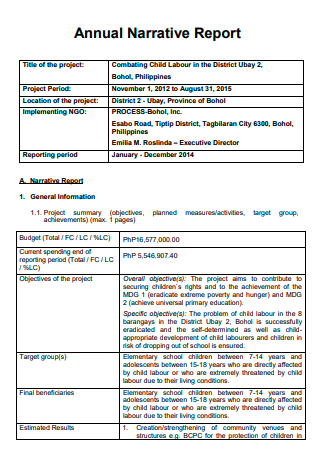
Sample Annual Narrative Report
download now -
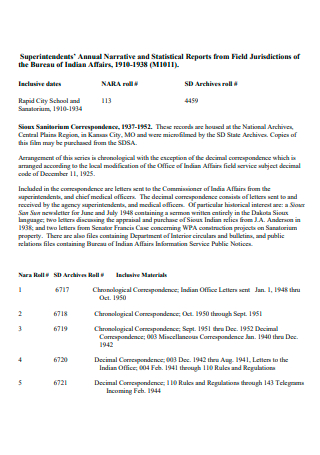
Annual Narrative and Statistical Report
download now -
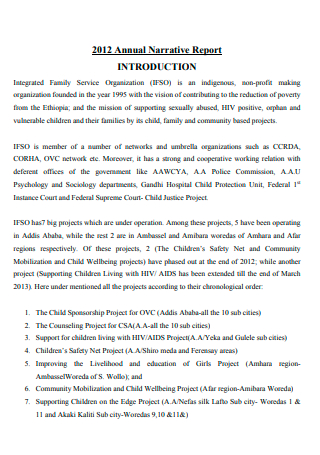
Printable Annual Narrative Report
download now -
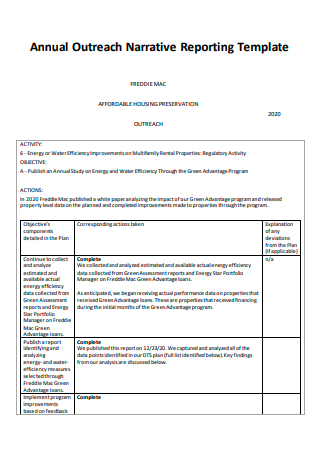
Annual Outreach Narrative Reporting Template
download now -

Simple Annual Narrative Report
download now -

Annual Narrative Report Cover Sheet
download now -
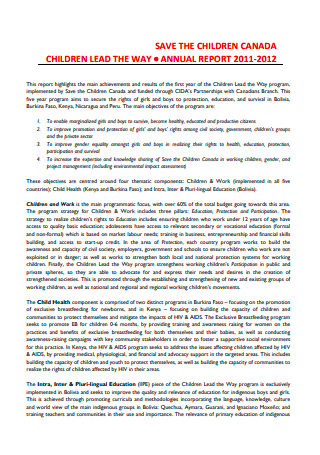
Draft Annual Narrative Report
download now -
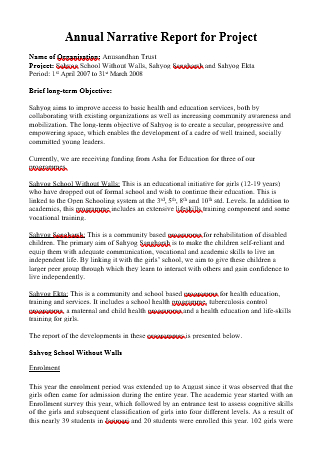
Annual Narrative Report For Project
download now -
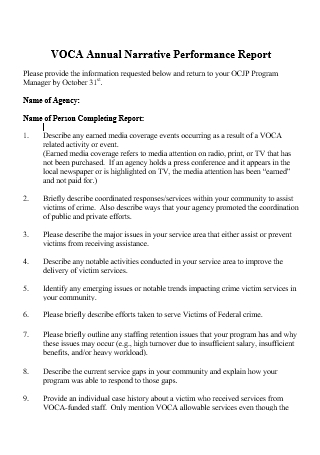
Annual Narrative Performance Report
download now
FREE Annual Narrative Report s to Download
15+ Sample Annual Narrative Report
What Is an Annual Narrative Report?
What Should be Included in an Annual Narrative Report?
Parties that Benefit or Use Annual Narrative Reports
How to Create an Annual Narrative Report
FAQs
Why is an annual narrative report important?
What is a prevalent issue when creating annual narrative reports?
Why is good design important in an annual narrative report?
What Is an Annual Narrative Report?
First of all, what is the practice of narrative reporting? Well, it simply refers to the act of describing all the non-financial data that is contained in the published documents for the purpose of giving out a comprehensive understanding of what the company’s business is, its respective market position compared to its competitors, its plans, its performance, and its aspirations. And as stated earlier, companies that make narrative reporting a habit give themselves an advantage over their competitors since it presents a more attractive outlook of their business which can improve stakeholder business relationships.
An annual narrative report, or an annual report, refers to a business document/publication that thoroughly reports the details of a company’s operations throughout the previous year. An annual report, as the name implies, is released once a year with the primary goal of sharing information with the company’s shareholders and investors, aside from reasons connected to regulatory requirements. The contents of annual reports are a significant source of information for stakeholders. The document includes thorough information about the firm, management perspectives, and a genuine financial record, allowing investors to make educated decisions regarding future investments. Both external and internal reports may include the material of an annual narrative report.
What Should be Included in an Annual Narrative Report?
Annual narrative reports will detail a substantial amount of information regarding how the company has performed throughout the previous year, and its overall contents will vary depending on the company. With that being said, here are some of the key contents that need to be written in an annual narrative report:
Parties that Benefit or Use Annual Narrative Reports
Here are the types of parties that largely benefit from effective annual narrative reporting from the companies:
- Customers – Annual narrative reports are used by customers of a company to acquire an overview of various companies and to assist them to determine which one to create a connection with. Customers are also interested in dealing with a high-quality product or service providers, and an annual report allows organizations to stress their fundamental beliefs and objectives. They also make effective use of the financial information in the annual report, which offers them a good picture of the company’s financial status.
- Shareholders – Annual narrative reports are used by the shareholders and potential investors of a company in order to have a greater knowledge of the company’s present status in order to try and make investment decisions. The annual narrative report also assists potential investors in deciding whether or not to buy stock. It also provides information on the company’s future plans, as well as its aims and objectives.
- Employees – Employees benefit from the annual narrative report in a variety of ways. It allows management to recognize employee ingenuity, quality, cooperation, and devotion, which are all important factors in total corporate success. Furthermore, an annual report may be utilized to communicate firm triumphs that have an influence on its workforce. Observing successful projects or efforts described in the annual narrative report reinforces the employees who contributed to its success.
- Suppliers – Annual narrative reports can provide an implied meaning to providers about the standards of the company of outside vendors by emphasizing internal measures of quality, ingenuity, and dedication. An annual narrative report may even include a description of a supplier that the organization has discovered to be exceptional. An annual narrative report recognizes the supplier for its efforts, helps to strengthen the business relationship, and gives the company’s other suppliers a better idea of the quality of service needed and the benefits that may be garnered from such service.
How to Create an Annual Narrative Report
An annual narrative report serves to express the established values and goals of the brand. And when effectively written and prepared, they also serve as essential parts of a company’s accountability and transparency. With that being said, here are the steps to be followed in order to create an effective annual narrative report:
-
1. Plan Ahead
The initial step to be performed in creating an annual narrative report and making it effective is to plan ahead on what to include in the document. Planning on creating an annual narrative report in advance is essential since it is a very long process that involves the requirement of an organized system for data gathering, data tracking, data analysis, media clipping, and gathering a database of business achievements. It is also important to consider options in creating such a report, as this can be created in-house by the company or also be outsourced to a third-party design firm.
-
2. Identify the Key Message
After planning on what to do in your annual narrative report and how you are going to do it, proceed to this step. In this step of creating the annual narrative report, identify the key message of the company. An annual narrative report is an excellent chance to emphasize your achievements and the effect of those achievements. Investors and workers are interested in what you did and why you did it. Businesses may establish confidence and cultivate long-lasting connections by tying their actions and successes to the end objectives and mission statement and producing a key message from it.
-
3. Draft the Content
After determining what the key message is in your annual narrative report, proceed to this step. This is sometimes the most challenging phase in preparing the yearly narrative report. It is critical to first draft the report’s content and format. Aside from the fundamental features, the annual narrative report must have a narrative that defines the general framework of the report and molds the information around a narrative thread. This makes it easy to detect and eliminate content that does not directly advance the narrative. In this process, keep in mind that the material of the annual report should be truthful and open. Don’t exaggerate your achievements or hide your misfortunes.
-
4. Finalize the Content and Design
After creating the draft of the contents of the annual narrative report, proceed to the final step, which is finalizing it and emphasizing its design. Take the draft you’ve created and incorporate it into a final designed structure. A well-designed, interesting, and professional annual narrative report may be utilized as a marketing device by a company. The reader must be able to scan throughout the document and find the information they need. You may utilize headings and subheadings to create a well-designed narrative report, keep the content short and straightforward, and highlight the crucial portions using colored text boxes, quotations, and captions.
FAQs
Why is an annual narrative report important?
An annual narrative report is important because it highlights a company’s key achievements, expectations for the coming year, and overall goals and objectives. It also provides information on the company’s financial situation and informs shareholders and employees about the company’s growth strategy for the coming year. Annual narrative reports are also essential since they keep your crucial company information relevant.
What is a prevalent issue when creating annual narrative reports?
The biggest difficulty with preparing an annual narrative report for the overwhelming majority of businesses is that the process is largely tedious. To collect material, it is commonplace to employ a variety of preferred word processing programs and spreadsheet software. The spreadsheet program is usually used for numerical data, which is then copied into the word processing program needed to make the report. This is potentially dangerous, error-prone, and time-consuming.
Why is good design important in an annual narrative report?
The design of an annual narrative report is vital because if it is disorganized, the readers may not grasp all you’ve tried to say. If it’s dull and dry, investors may decide to devote their time to other things instead. Annual narrative reports are a great method to convey your business to potential consumers and staff alike. The way you display your company affects their perception of you, your beliefs, what you stand for, and all of the information you’ve provided. An engaging design of your annual narrative report gives your many readers a delightful experience and helps them leave with the main points from your annual report.
As stated earlier, annual reports serve as documents that, when effectively written, serve as an element of how transparent your company is and how accountable it can be. In this article, various examples of such documents exist for you to acquire should you need an example when you’re creating one.
